Kit Buss on How Critical Role Helped Kickstart her Art Career

Please introduce yourself. We’re all curious about your work, its influences, and any past experiences that helped you become the person you are today.
Hello! My name is Kit Buss, and I’m a UK-based comic artist and illustrator. I’ve been working in the industry in one form or another for a little over a decade now and have produced art for clients ranging from Channel 4 and Hat Trick Productions to Dark Horse - and, of course, Critical Role, which is what I think most people know me for!
Working in fantasy and historical genres seems to have become something of a niche. I’ve got quite an obsession with both, particularly from an art and fashion point of view (one of my favourite presents from this Christmas just past was a book on the history of the Russian fashion industry), so it’s certainly a good fit. I think a lot of my ‘content’ inspiration tends to come from things I’ve read - I’m also a big fan of ghost stories, for example! – but artwork-wise, gosh… that’s hard. It’s all over the place. I remember in my late teens discovering Tracy J. Butler’s early work for her ‘Ainessa’s Martyrs’ universe. I was mesmerised by the level of detail and the dynamism of the characters. That’s always been an aspiration point for me.
The thing people seem to recognise my style for most is the noses, though. I’m going to make myself out to be a cheat here… I picked up the way I draw noses from Kenneth Rocafort’s work! I remember seeing how he defined the tip of the nose with this really delicate bit of linework and thinking, ‘wow, that works so well – I really like the way he does that!’. So there you go – that’s where it comes from!

How did you get the name AnemoneTea?
I grew up in a very rural part of the south of the UK, and we’re fortunate to have a lot of ancient woodland in the local area.
One of the plants that grow there is the wood anemone. I always thought they were lovely flowers and they remind me of home whenever I see them!
I also had a character I’d created in my teens named Anemone. One of the things Anemone enjoyed was tea, which is ironic since I really didn’t at the time. I didn’t start gaining a taste for it until my mid-twenties, but it seemed like a sophisticated, grown-up sort of thing to drink to younger me. ‘AnemoneTea’ came about as a combination of the two: anemones and tea, and in the end, it just stuck around.
How’d you get involved in Critical Role? We’d love to hear the story~
I used to volunteer as a guest chaperone at the London MCM Comic-cons. In one show, we had Liam (O’Brien) over as a guest. Liam being the lovely guy he is, we wound up chatting and hanging out a lot over the weekend. We kept in touch afterwards, and some months later, he emailed me to ask about me producing a commission for a D&D group he had with ‘some friends’. I said I’d love to do it and then promptly completely forgot about it!
Fortunately, later that year, Laura (Bailey) and Travis (Willingham) were over as guests for MCM. Through the course of conversation, we established that they were two of the aforementioned D&D group, and I was the ‘artist friend’ Liam had mentioned. Travis said that they were thinking about streaming their game; only a few episodes, mind, and they weren’t sure if anything would come of it. However, they did need some artwork and assets for it – would I be interested in creating some for them? Obviously, I said ‘yes’.
The rest is history, really – we know how it went from there! I was fortunate enough to stay on as their official artist for the rest of the Vox Machina campaign – absolutely one of those ‘right place at the right time’ sort of things.
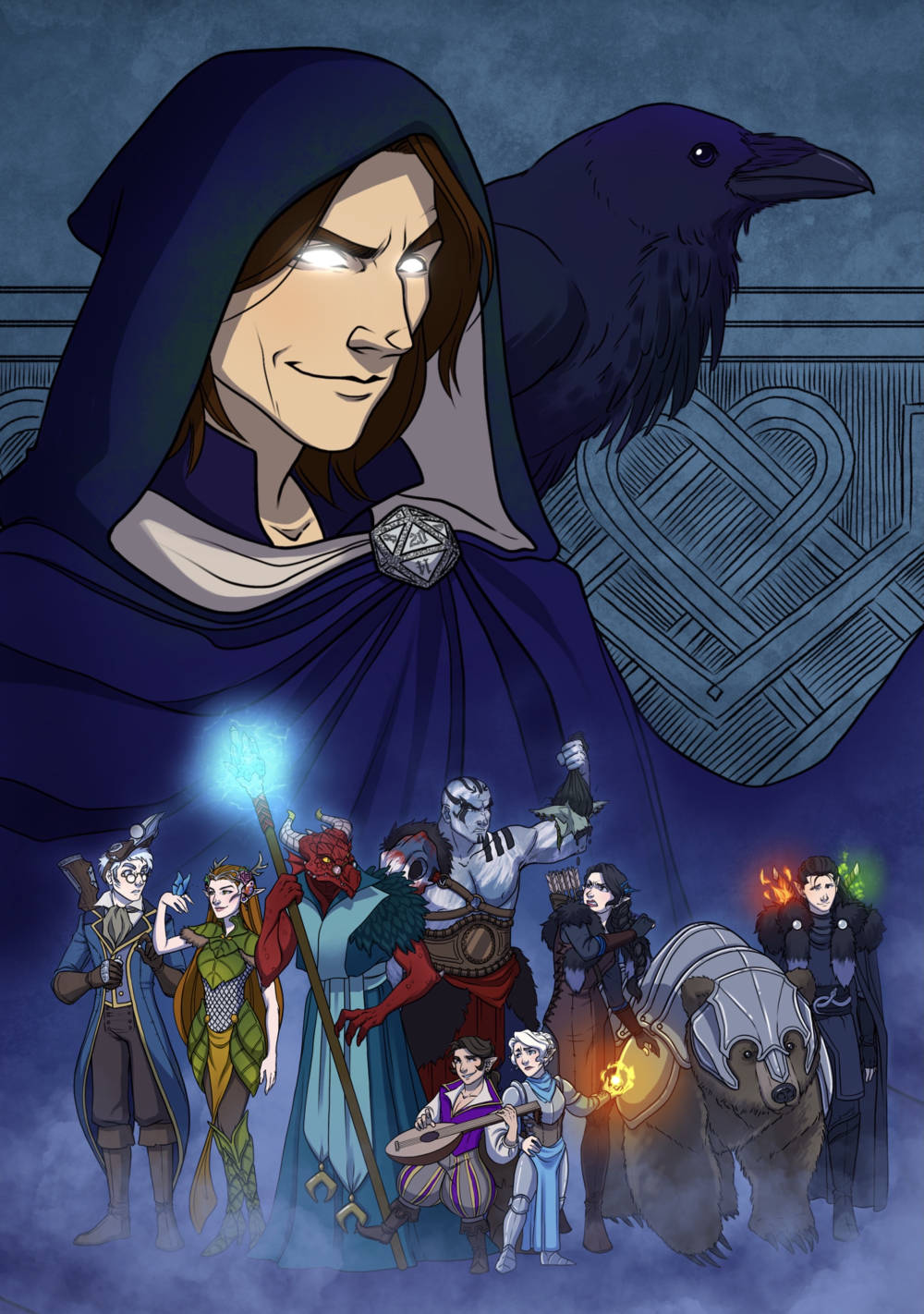
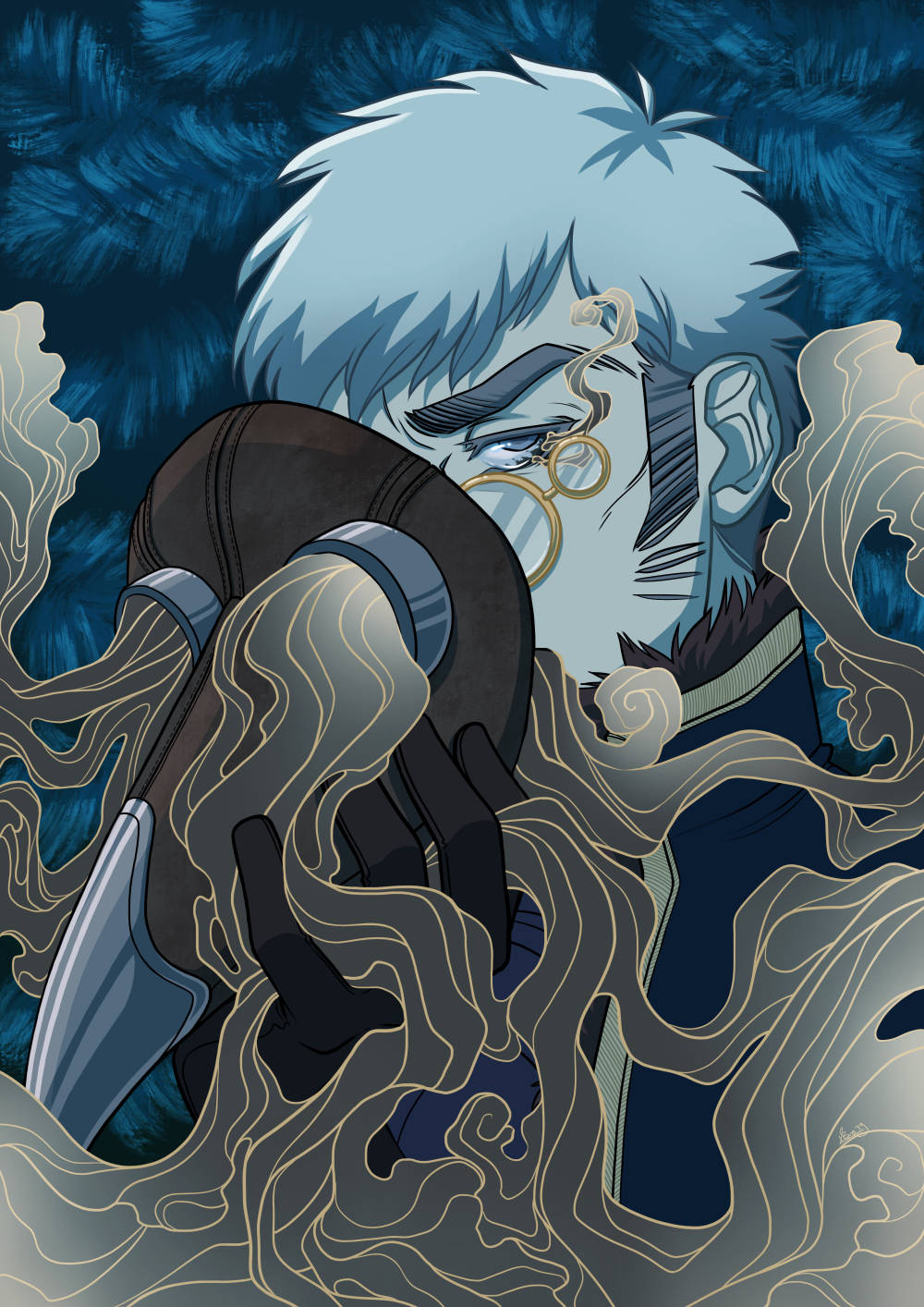
Would you say becoming the official Critical Role artist impacted your artwork? Have you tried different styles or techniques to appeal to the audience even more?
It had an enormous impact, without question. To this day, I’m quite amazed at the chance they took on me: I was unknown, and I’m not sure how good I was when I first started. That said, working on the show was an incredible learning curve, and I’m very grateful for their faith in me. I learned so much, and I definitely developed in terms of skill.
I don’t think I ever really played around with style, per se; the style I was working in was always my own, and I’m not sure how much I thought about the audience either, if ever – which sounds terrible! I was quite myopic – the main guide was always whatever the cast had briefed me with or requested, with the rest of it just being me filling in the gaps. They did give me a lot of creative free rein in terms of things like outfit design, which was great fun, so a lot of that was just me drawing what I thought would look cool.
After the campaign finished and I went on to work on other things, I became a lot braver about trying out different styles and experimenting more.
Working on Critical Role fostered my confidence and skill as an artist; it gave me that initial super-boost.
I look back on the work I produced for it now and think, ‘wow, I’ve come a long way’, which is really gratifying, but there’s still that little twinge of ‘oh no’ when I see old artwork, too. I think everyone gets that. But it’s good - it shows that you’re growing and improving all the time. I try and push myself in more interesting ways these days; back then, I think I was just trying to measure up to the task!

Have you always been interested in fantasy, or was that something born thanks to your work on Vox Machina?
Fantasy as a genre has been my interest from the get-go. My dad is largely the one to thank for that! He’s a big fantasy enthusiast himself and was reading me Tolkien and Eddings as bedtime stories way back in the when. He’s also a massive history buff, so I was raised on museum visits and castle cross-section picture books and episodes of ‘Time Team’ – his enthusiasm’s quite contagious.
I’m also an only child, so most of the time, I played by myself as a kid. I spent a lot of time playing in the garden, making up stories, and having adventures in the woods; I also had a whole menagerie of imaginary creatures. I think it was a combination of a naturally vivid imagination and having parents who were creative and supportive and who encouraged me to read and draw and write – I was exceptionally fortunate.
It kickstarted a love of fantasy that’s snowballed over the years. So Critical Role was just one of those very lucky gigs that you land that connect with something you’re already interested in. A dream job!
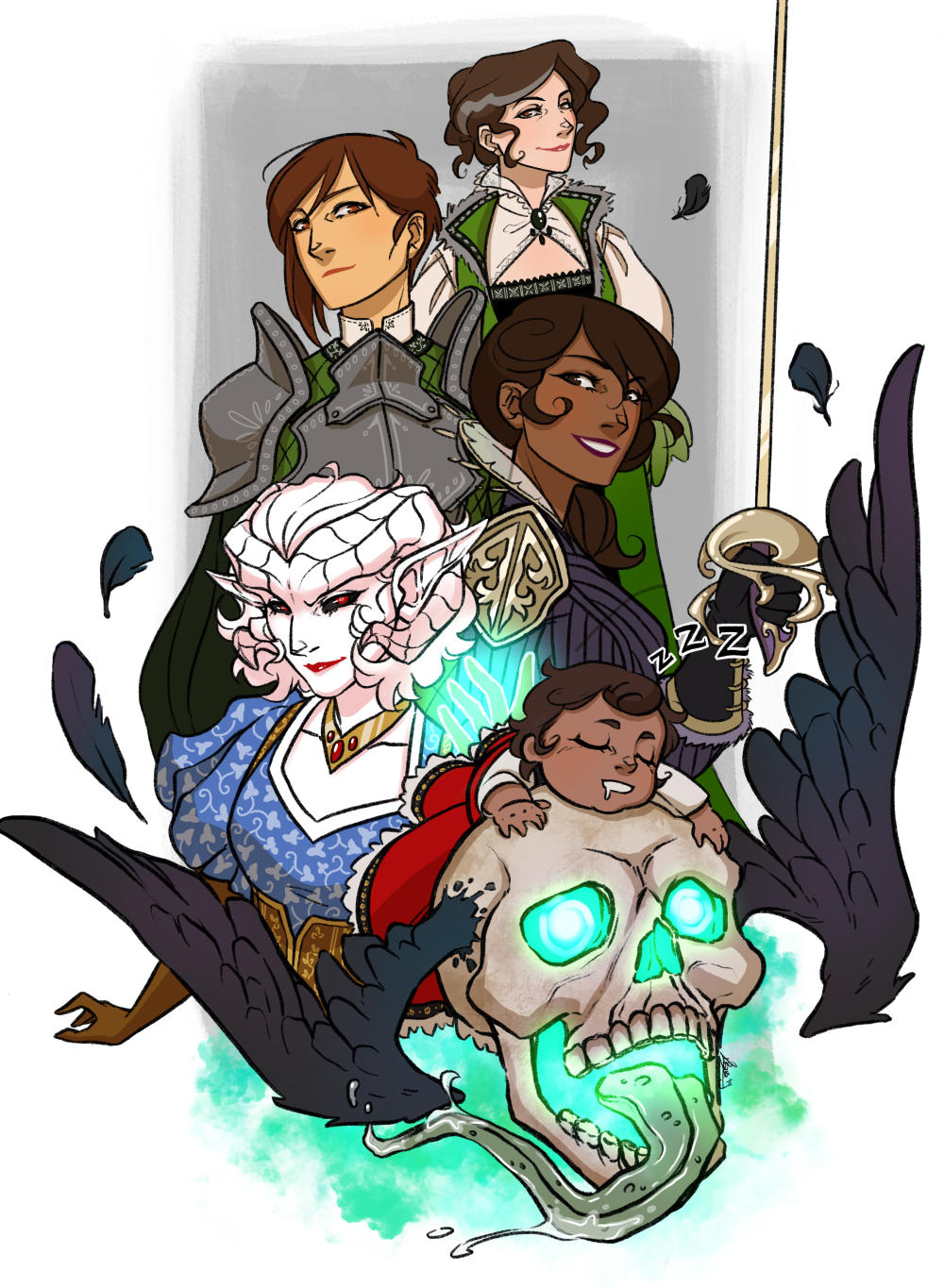

What are some of the messages you want people to find in your work?
That’s a tricky one… I always think of messages as things you deliberately put in your work for people to find, and I don’t think that’s ever been something I’ve done. I definitely use stories to examine subjects and concepts that I personally find interesting, though, whether that’s a particular plotline or character type or something more relevant to real life.
These days, I do a lot more of the ‘what haven’t I seen much of?’ thing, too. Cloven: Bloodlines has been a really good opportunity for that because it’s my own creation, so I can take it where I want it to go.
The character of Enger is a good example: the contrast of a big, strong, very traditionally masculine character who’s riddled with acute anxiety was an interesting idea to me.
I’m someone who suffers terribly with anxiety, sometimes to the point where it’s genuinely debilitating, so it’s fair to say there’s a bit of ‘write what you know’ going on, but most of the male characters of that type that I’ve seen tend to be very confident and self-assured. Enger projects that at first glance, but once you get to know him, he’s actually someone who really struggles to get out of his own way. It’s a character type I’m keen to explore – and that’s how I usually let myself be guided in terms of what goes into my work.
I don’t think you’re always going to land on ground-breaking ideas that way, but I do think there’s something to be said for writing about and drawing things that you find interesting. You enjoy the work more, and hopefully, some of that will carry across to your audience as well. With any luck, they’ll wind up finding it interesting too!
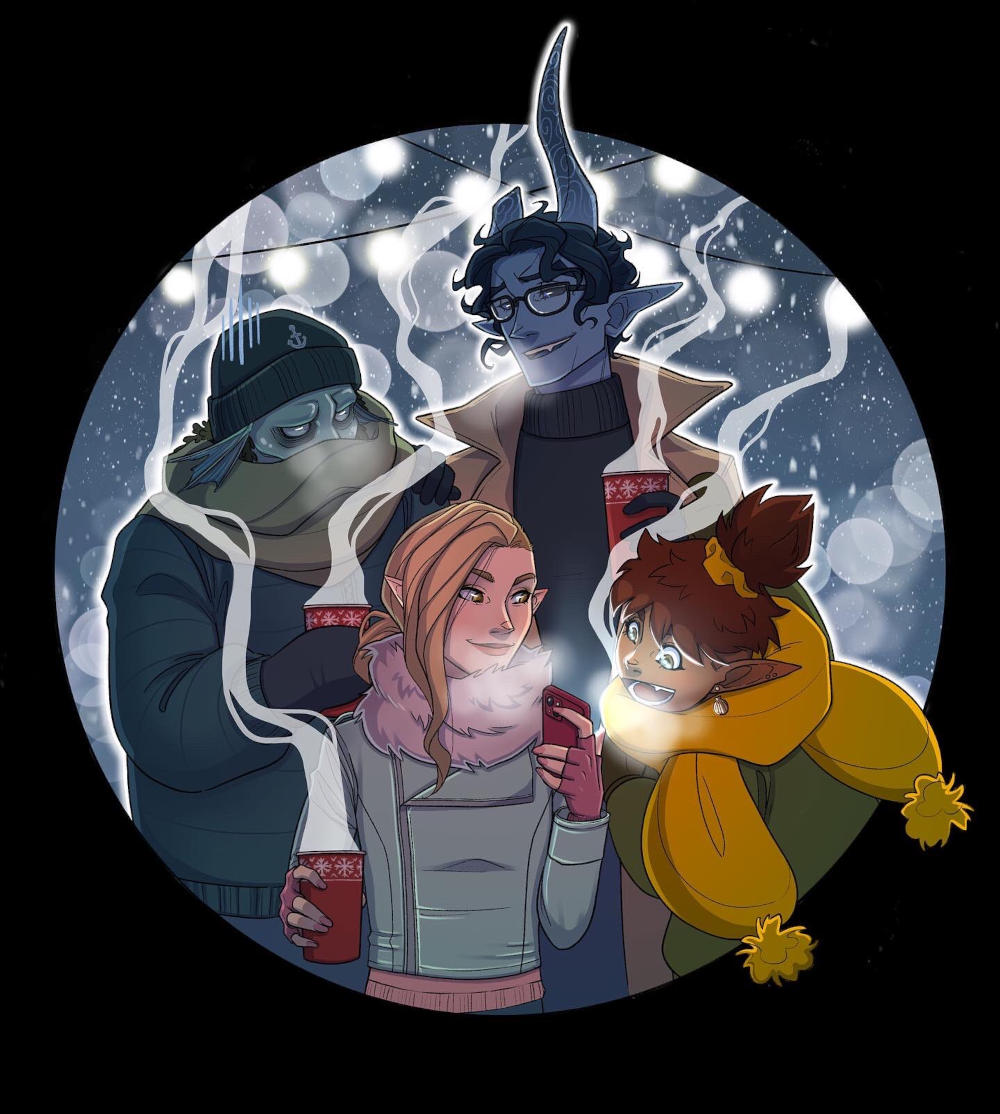
Was there ever a decisive moment in your life that brought you to the realisation that you wanted to pursue art as a career, or did you always know that this was something you were meant to do?
That’s a hard one to pinpoint. I know that when I was very young, I would tell people I had no plans to be an artist because ‘there’s no money in it’. I’m not sure where I picked that up from! But I started taking art more seriously during sixth form college. I’d always drawn, but that was when I started carrying around a sketchbook and thinking this was something I wanted to get really good at. I went on to study traditional 2D animation at university but ultimately realised that it wasn’t the right path, so I suddenly found myself heading towards graduation with absolutely no idea of where I was going next. It was a pretty scary feeling.
I wound up talking it out with my mum, and she said: ‘If you could do anything – regardless of practicality – what would it be?’. I just sort of shrugged and went ‘comics?’ – and then had this epiphany that there really are people who create comics for a living, aren’t there?
My mother doesn’t remember this conversation, which is disappointing because it was quite pivotal for me!
So that was the point at which I started down the comic artist road. It wasn’t a quick road by any means. I was fortunate enough to have some good industry contacts, which meant I could start making some progress, but I never made enough to live on, so it was years of doing day jobs to pay the bills while I did the art stuff in the evenings. Critical Role was really the turning point; that was the launchpad that levelled me up and got me a bit of professional clout so I could go full-time. So the dream was always there; it just took a while to finally realise it.
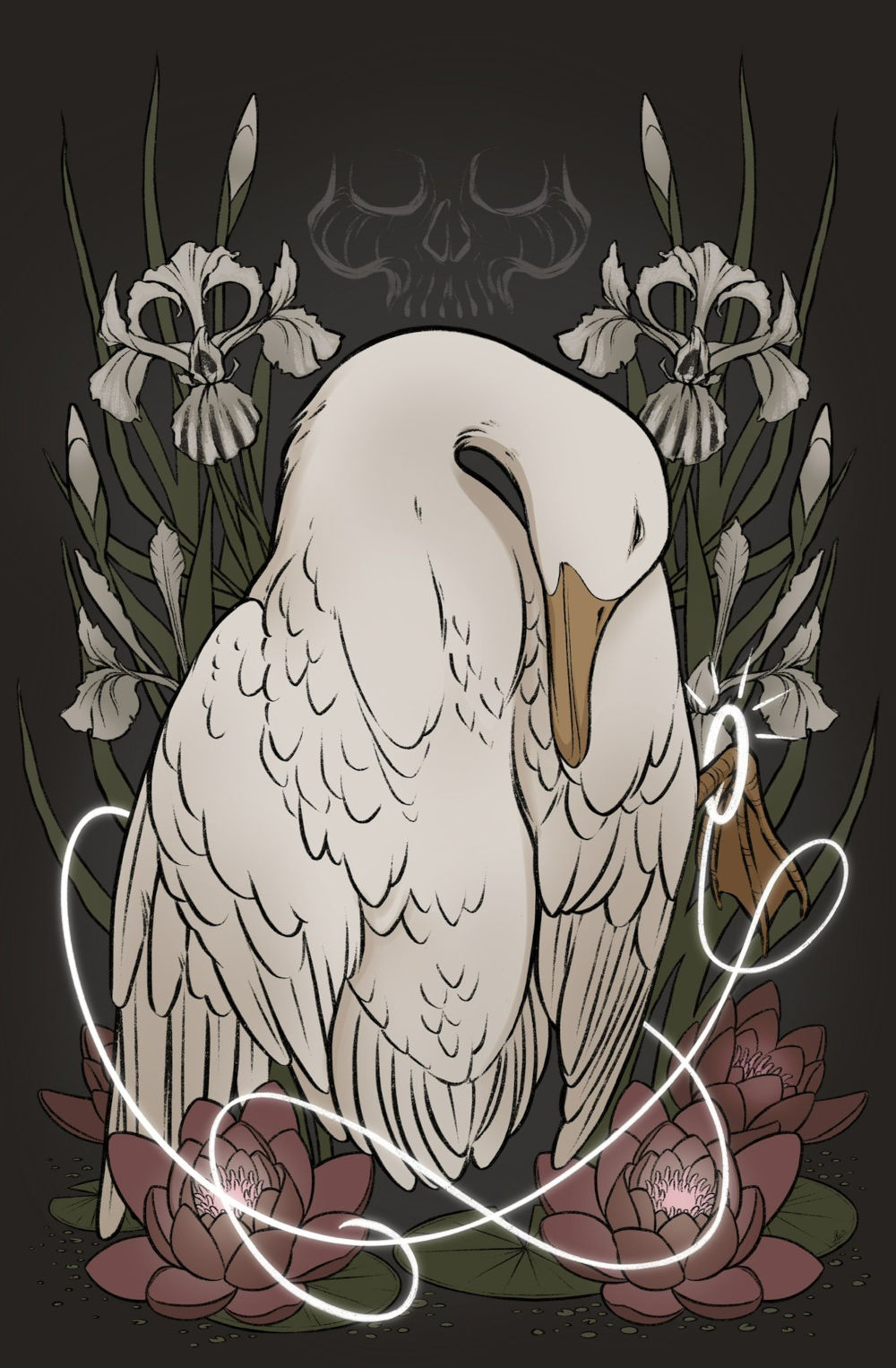
Many artists (me included) often talk about how important personal projects are to keep ourselves inspired. Do you have any ongoing projects like that these days?
I have many, many ongoing projects. The main one is obviously Cloven: Bloodlines, but there’s a tonne of stuff on the back burner, too. I have an illustrated collection of short stories I want to do, some collaborative ventures, ghost story comics, and even a tabletop setting… The trouble is that my brain’s always off churning out other ideas in the background while I’m working on whatever I’m supposed to be working on.
Hopefully, these are all things I’ll get to one day! But having personal art and projects to work on is vital, just like you say. Working for other people is great because it can see you creating in ways you’d never have thought of yourself. Working on your own stuff is also great because it’s just you testing your limits and honing your style. I’m not sure which comes with more pressure, though…
Have you ever struggled with an artist’s block? If so, how did you manage to overcome it?
I’ve never met an artist who didn’t, to be honest. This last year in particular has been extremely tough. It usually takes me about three months of work to produce an issue of Cloven from start to finish; Issue #4 took me nine in the end. I was working on other things during that time, but everything was a slog; the focus and the inspiration just weren’t there.
It’s a difficult line to walk: you don’t want to lean into it too much by going, ‘oh, well, I’m not in the right headspace to work so I guess I’ll just sit here’, but at the same time creative work has an undeniable level of emotional involvement to it.
Whenever I’m struggling with something like artist’s block, the first thing I do is take a look at where I am personally: am I eating well? Am I getting enough sleep? Am I getting enough mental stimulation?
Blocks are a super demoralising thing to go through. When you’re having a tough time, there’s a temptation to just couch yourself in familiar, comfortable things that aren’t too taxing. There’s absolutely nothing wrong with that, but if that’s all you do, I think it adds to the block rather than shifting it. Watching, reading or experiencing new things, putting myself in a position where I’m exposed to new stuff rather than old, really helps. I’ll also doodle. Not draw – drawing is too much pressure with a block. I’ll just sit and doodle. That way, even if whatever I’m drawing is terrible, it means I’m still keeping my hand in.
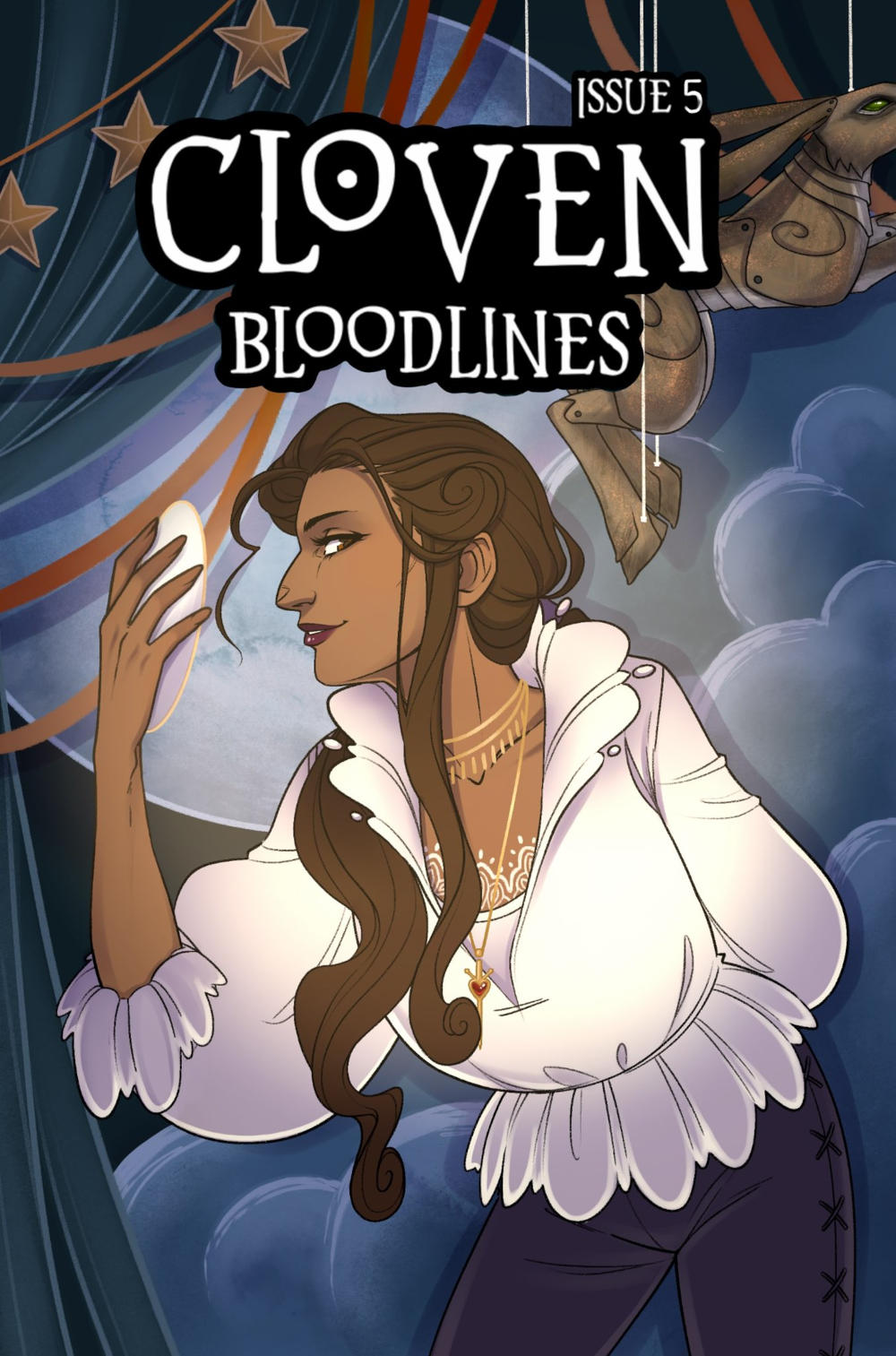
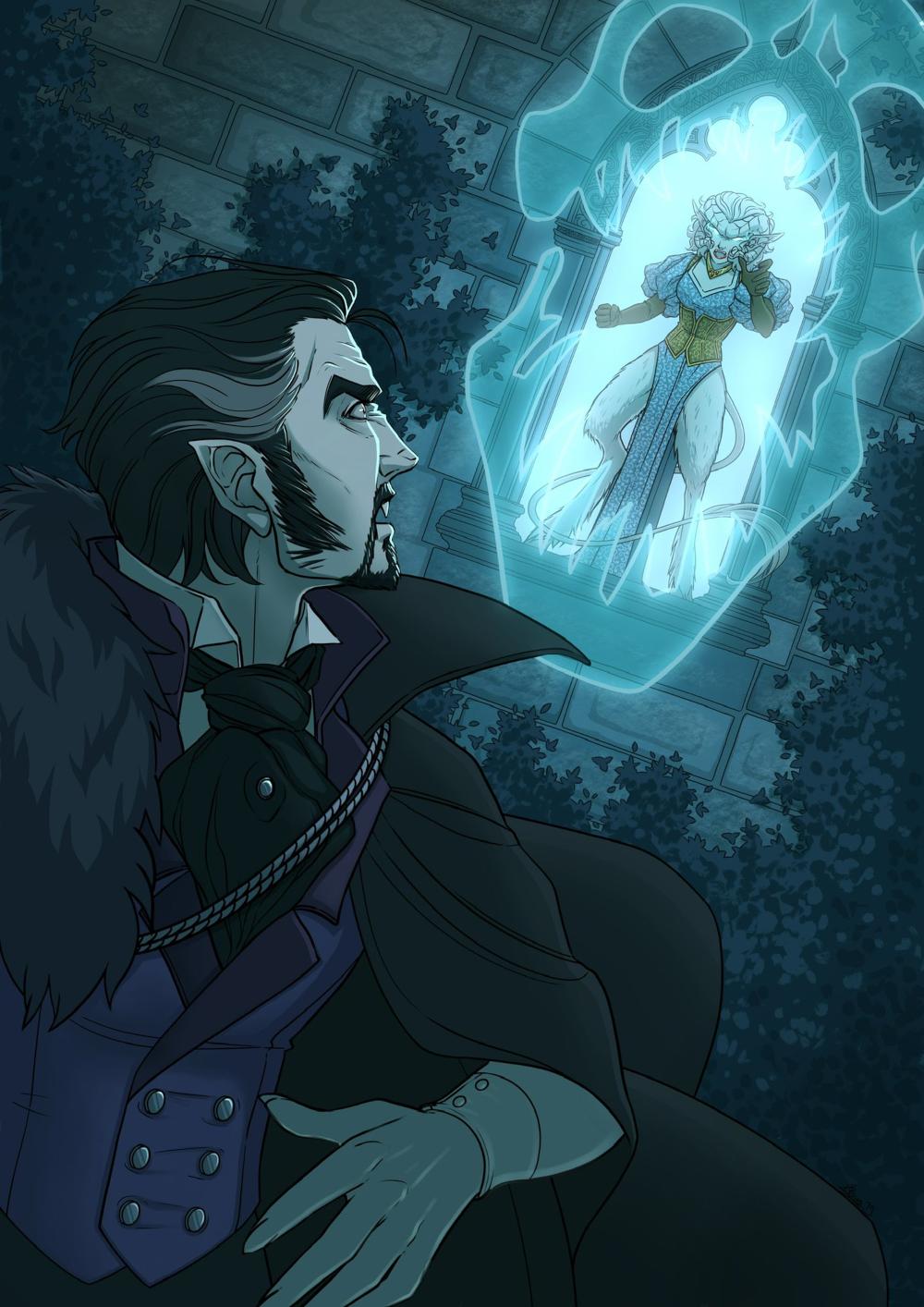
What can you tell us about Cloven: Bloodlines? Lillith’s tale seems to be a big success so far, and issue #5 is set for release next, right?
I’m astonished and very grateful that it’s doing so well. Every new issue that comes out, I think, ‘this will be it – this will be the one where people lose interest’; but so far, I’m relieved to say that hasn’t been the case!
Cloven: Bloodlines follows Lillith’s backstory from right back when she first broke with her sisters.
I originally intended for it to be more of a horror comic, but I quickly realised that would never be the case; horror works best when your protagonist is relatable, and Lillith really isn’t – which is the whole point!
Lillith comes from a very dark, very insular background. The comic is about her suddenly encountering the world and other people and all these things she isn’t familiar with, and how that gradually changes her for the better.
The relatable characters are the gang of supporting cast members she falls in with over the course of the story. I guess you could say it’s a mixture of fantasy adventure, found-family dynamics and a good dollop of folk horror.
It’s benefited a great deal from my husband coming on as a co-writer, too. We’re currently working on Issue #5 for release in May with the intention to do our first collated edition of the comic thus far later this year. I’m really hoping to do a special edition of the collated version with lots of concept art and information about the world in the back; there’s a lot of lore for people to sink their teeth into!
Do you have any advice for young artists that don’t have the support they need to continue creating?
The best thing you can probably do – not just as an artist but in pretty much any creative industry – is network. Network as much as you can. Go to conventions and shows and meet industry professionals. Make friends, make contacts! Just be proactive.
If you can’t make it to shows, show your work off online. Algorithms and the emphasis on follower counts can make it very daunting, but don’t be discouraged. At the end of the day, it’s a community, and in my experience, most of the art gigs you’ll land will come from someone else putting your name forward or passing something on to you.
I would also say not to put any kind of pressure on yourself to be a full-time, professional artist. Not because of any shortfall on your part, but simply because no one needs that kind of pressure. It can take years to get to where you want to go; it can take years to feel confident enough to do what you want. That’s okay – it’s not a fast process. Nothing worth having is. The important thing is to keep doing what you love, being a positive, active part of the community (you’ll generally get out what you put in – don’t just sit there waiting for likes! Engage with other folks!); and, yes, taking those 9-5 jobs to pay the bills. Working won’t make you any less of an artist – you’ll just be a less stressed one!
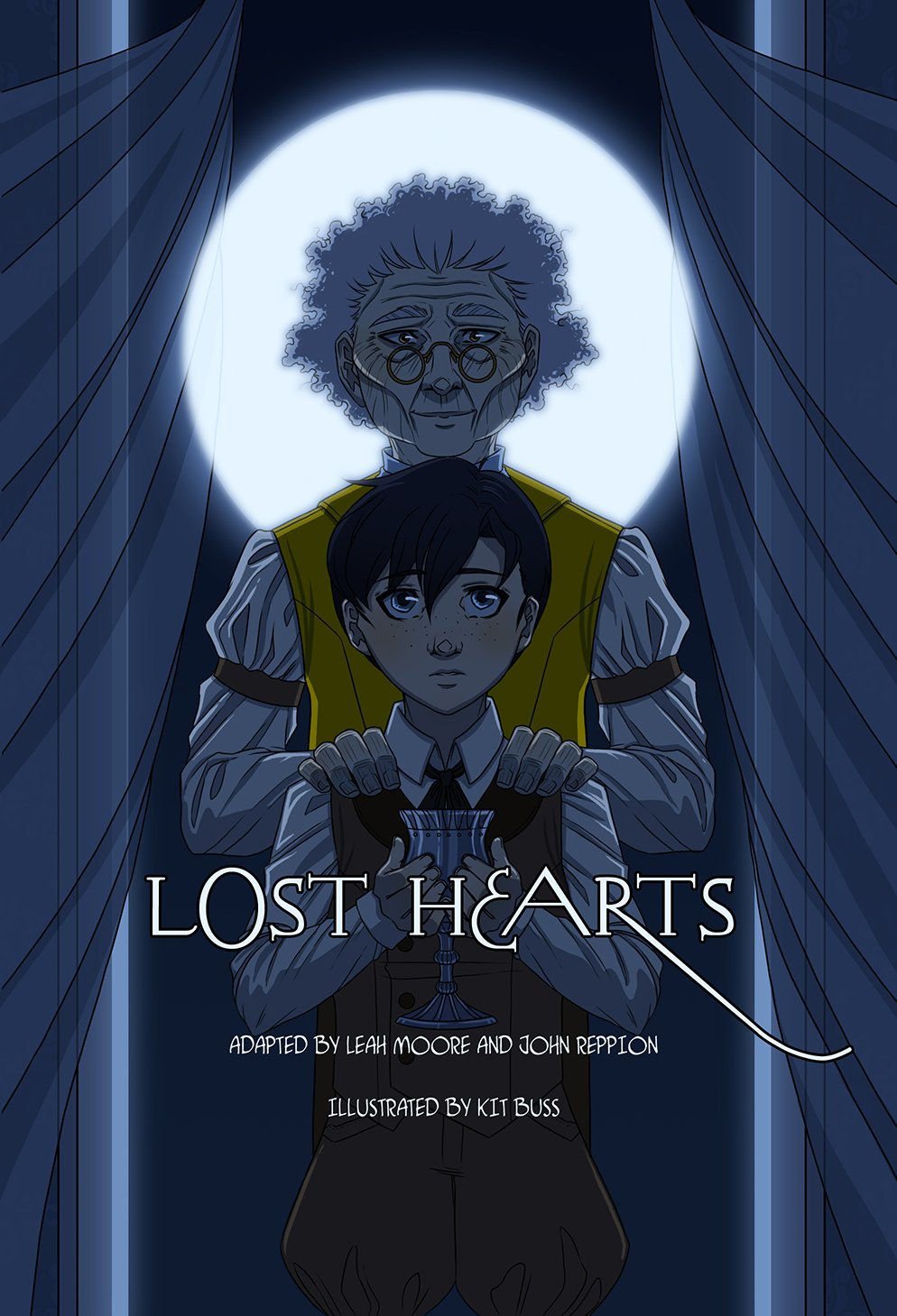
What’s next for Kit Buss?
Oh god… who knows?! Lots more work, I hope! Obviously, Issue #5 is the immediate priority, and after that, the first collated edition, but beyond those, I think I’d like to have a crack at that collection of illustrated short stories.
I’d also like to see if I can land some more horror comic work. I’ve got a few bits under my belt already, but I’d love to do more – it’s a fascinating genre to work in as an artist because it’s so subjective. What doesn’t scare one person will terrify another, and vice versa. That’s a great thing to explore with an audience in mind.
I remember I read a review of some horror work I did once, and while the reviewer was very charitable about it, they ultimately said they felt my style was too… Ghibli-esque to gel with the genre. I think that galvanised me to work on my Drawing Scary Things skill set!
It’s definitely a challenge I’ve been setting myself with Cloven: Bloodlines, and I’m quite proud of the wraiths we had in Issue #4, so I think I’m making progress. So yes: collated editions, illustrated short stories, and spooky stuff. That’s what’s next for me!
If you enjoy Kit’s work, consider visiting her website or following her on Twitter.
Please donate to perephoneia.art if you liked this interview. Your support helps cover the hosting costs for the website, keeping it free and online for others to discover.
